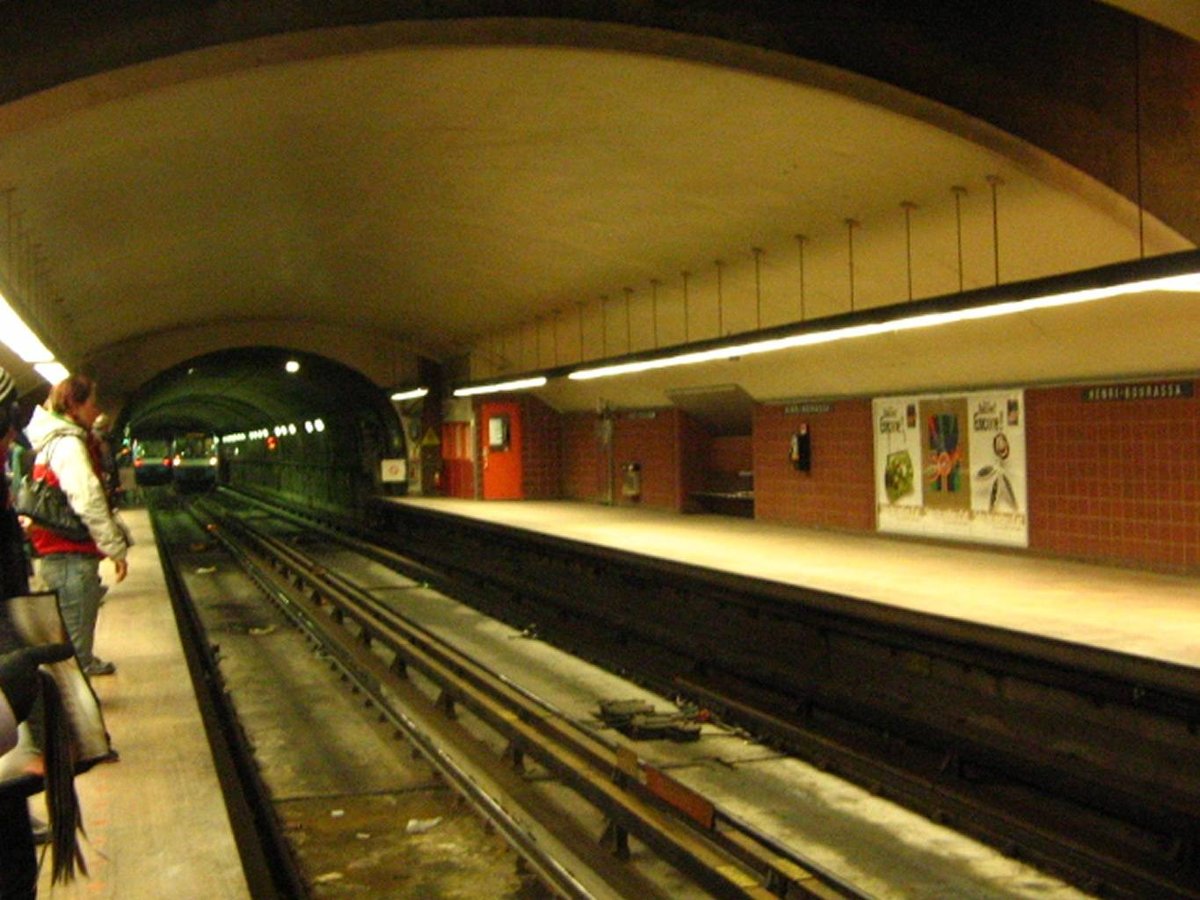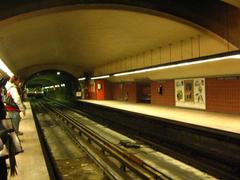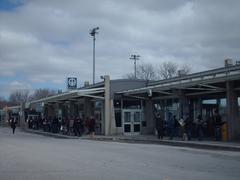
Henri-Bourassa Montreal Visiting Hours, Tickets, and Historical Sites Guide
Date: 15/06/2025
Introduction to Henri-Bourassa in Montreal: What Visitors Can Expect
Henri-Bourassa Boulevard is a vital east–west artery spanning approximately 18 to 29 kilometers across northern Montreal. More than a transportation corridor, it stands as a living testament to Montreal’s rich multicultural history, political legacy, and ongoing urban transformation. Named after Henri Bourassa (1868–1952)—a prominent Quebec nationalist, journalist, and founder of Le Devoir—the boulevard encapsulates the ideals of French-Canadian rights, cultural coexistence, and civic engagement that Bourassa championed throughout his life (Britannica; Parks Canada).
Originally known as Kelly Street, reflecting its Irish settler origins, the boulevard has evolved since its renaming and expansion in the mid-20th century. Today, it connects diverse neighborhoods such as Montréal-Nord and Ahuntsic-Cartierville, and features key transit hubs like the Henri-Bourassa Metro Station and REM stations, making it highly accessible for both visitors and locals (Montreal Official Tourist Guide 2025-2026).
Visitors can enjoy a variety of experiences along and near the boulevard—from exploring green spaces like Parc-nature de l’Île-de-la-Visitation to engaging with vibrant local markets and cultural centers. Ongoing urban renewal initiatives, including dedicated cycling corridors and bus rapid transit lanes, further enhance accessibility and environmental stewardship (Audiala).
Whether you are a history enthusiast, urban explorer, or simply seeking a window into Montreal’s diverse culture, Henri-Bourassa Boulevard provides a comprehensive and memorable experience. This guide offers an in-depth look at its history, cultural significance, transit options, visitor tips, and more.
Table of Contents
- Introduction
- Early Origins and Naming
- Urban Development and Transit History
- Postwar Housing and Neighborhood Character
- Modernization and Sustainable Mobility Initiatives
- Visitor Information and Accessibility
- Cultural and Political Significance
- Notable Events and Community Engagement
- Infrastructure and Urban Fabric
- Frequently Asked Questions (FAQ)
- Visuals and Media
- Related Articles
- Conclusion and Recommendations
- Official Sources and Further Reading
Early Origins and Naming
Henri-Bourassa Boulevard is named in honor of Henri Bourassa, whose advocacy for French-Canadian rights and Canadian autonomy left an indelible mark on Quebec’s history. Prior to its current designation, segments of the boulevard were known as Kelly Street, a nod to the Irish immigrant farmers who settled the area in the 19th century. This blend of Irish and French-Canadian influences helped shape the multicultural identity of Montreal’s northern neighborhoods.
Urban Development and Transit History
The transformation of the boulevard began in the mid-20th century, with the official renaming in 1952 following Henri Bourassa’s death. Its expansion accompanied Montreal’s rapid urbanization, involving significant city planning and expropriations. Historically, sections of the boulevard followed former tramway lines, underscoring its long-standing relationship with public transit.
Currently, Henri-Bourassa Boulevard is lined with major transit stations, including Henri-Bourassa Metro Station (Orange Line), Du Ruisseau and Bois-Franc REM stations, and Bois-de-Boulogne train station, positioning it as a central mobility hub for northern Montreal.
Postwar Housing and Neighborhood Character
The neighborhoods surrounding Henri-Bourassa, particularly around Marcel-Laurin, are characterized by “War Time Housing”—modest homes constructed during and after World War II for returning veterans. These residential zones illustrate the postwar expansion and development of working-class suburbs at the city’s edge.
Modernization and Sustainable Mobility Initiatives
Montreal’s commitment to sustainable urban living is reflected in recent improvements along Henri-Bourassa Boulevard. The introduction of bus rapid transit (SRB) lanes, the Réseau express vélo (REV) cycling corridor, and extensive greening projects emphasize safety, environmental stewardship, and accessibility. Widened sidewalks, upgraded utilities, and hundreds of new trees foster a welcoming environment for pedestrians and cyclists.
Redevelopment from Autoroute 40 to Boulevard Albert-Hudon continues through 2025 and 2026, with phased completions enhancing the overall visitor experience.
Visitor Information and Accessibility
Henri-Bourassa is not a conventional tourist attraction with set visiting hours or tickets, but rather a dynamic public space accessible to everyone. Key points for visitors include:
- Transit: Served by the Henri-Bourassa Metro Station (Orange Line), REM stations, and several bus routes, the boulevard is highly accessible.
- Active Transportation: Dedicated cycling paths and pedestrian-friendly sidewalks connect Henri-Bourassa to Montreal’s broader network.
- Local Attractions: Proximity to community centers, shops, and parks such as Parc-nature de l’Île-de-la-Visitation allows for diverse exploration.
- Accessibility: Metro stations and public spaces are designed to accommodate people with mobility needs.
Cultural and Political Significance
Henri Bourassa’s ideals of cultural duality, linguistic rights, and political autonomy are woven into the very fabric of the boulevard and its surrounding institutions. His influence endures in the city’s approach to multiculturalism and civic engagement, with several electoral districts and public sites bearing his name.
Notable Events and Community Engagement
The opening of the Henri-Bourassa Metro Station in 1980 marked a new era for northern Montreal, enhancing connectivity and fostering economic growth. Ongoing redevelopment projects have been shaped by extensive public consultation, reflecting a balance between heritage preservation and modern urban needs.
Infrastructure and Urban Fabric
Henri-Bourassa Boulevard features a blend of residential, commercial, and institutional buildings. Its robust transit infrastructure is complemented by new cycling and pedestrian amenities, making it a model for sustainable urban design in Montreal.
Frequently Asked Questions (FAQ)
Q: What transit options are available along Henri-Bourassa Boulevard?
A: The boulevard is served by the Henri-Bourassa Metro Station (Orange Line), Du Ruisseau and Bois-Franc REM stations, Bois-de-Boulogne train station, and several bus lines.
Q: Are there historical sites to visit near Henri-Bourassa?
A: While the boulevard itself is not a traditional historical site, nearby parks, community centers, and cultural landmarks offer rich insights into Montreal’s diverse heritage.
Q: Is Henri-Bourassa accessible for cyclists and pedestrians?
A: Yes, dedicated cycling corridors and pedestrian-friendly sidewalks promote safe and enjoyable travel.
Q: Does Henri-Bourassa have visiting hours or require tickets?
A: No, it is a public boulevard open at all times. Specific attractions along the route may have their own hours and admission policies.
Visuals and Media
Related Articles
- History of Montreal’s Public Transit
- Exploring Montreal’s Northern Neighborhoods
- Sustainable Urban Design in Montreal
Conclusion and Recommendations
Henri-Bourassa Boulevard is much more than just a major street; it is a dynamic symbol of Montreal’s heritage, urban progress, and cultural inclusivity. Its legacy is rooted in the advocacy and vision of Henri Bourassa, whose commitment to French-Canadian rights and bilingualism continues to inspire Montreal’s evolving identity.
Visitors are encouraged to explore the boulevard and its adjacent neighborhoods via public transit, especially during spring and early summer for the best weather. Make use of cycling paths, pedestrian walkways, and local markets to experience the full richness of the area. For deeper insights, consider downloading the Audiala app for guided tours and up-to-date information on cultural events.
To stay current on redevelopment projects, transit updates, and events along Henri-Bourassa, consult official Montreal tourism websites and follow relevant social media channels. Embark on a journey along this storied boulevard to discover the heart of northern Montreal’s history, diversity, and community spirit.
Official Sources and Further Reading
- Henri Bourassa, Britannica, 2024 (Britannica)
- Henri Bourassa National Historic Person, Parks Canada, 2024 (Parks Canada)
- Montreal Official Tourist Guide 2025-2026, Ville de Montréal, 2025 (Montreal Official Tourist Guide 2025-2026)
- Exploring Henri-Bourassa Boulevard, Société de transport de Montréal (STM), 2025 (STM)
- Audiala Mobile App, 2025 (Audiala)
- CBC History – Henri Bourassa and Canadian Nationalism, 2024 (CBC History)
- Travel Notes and Things: Plan a Trip to Montreal, 2025 (Travel Notes and Things)






























































































































